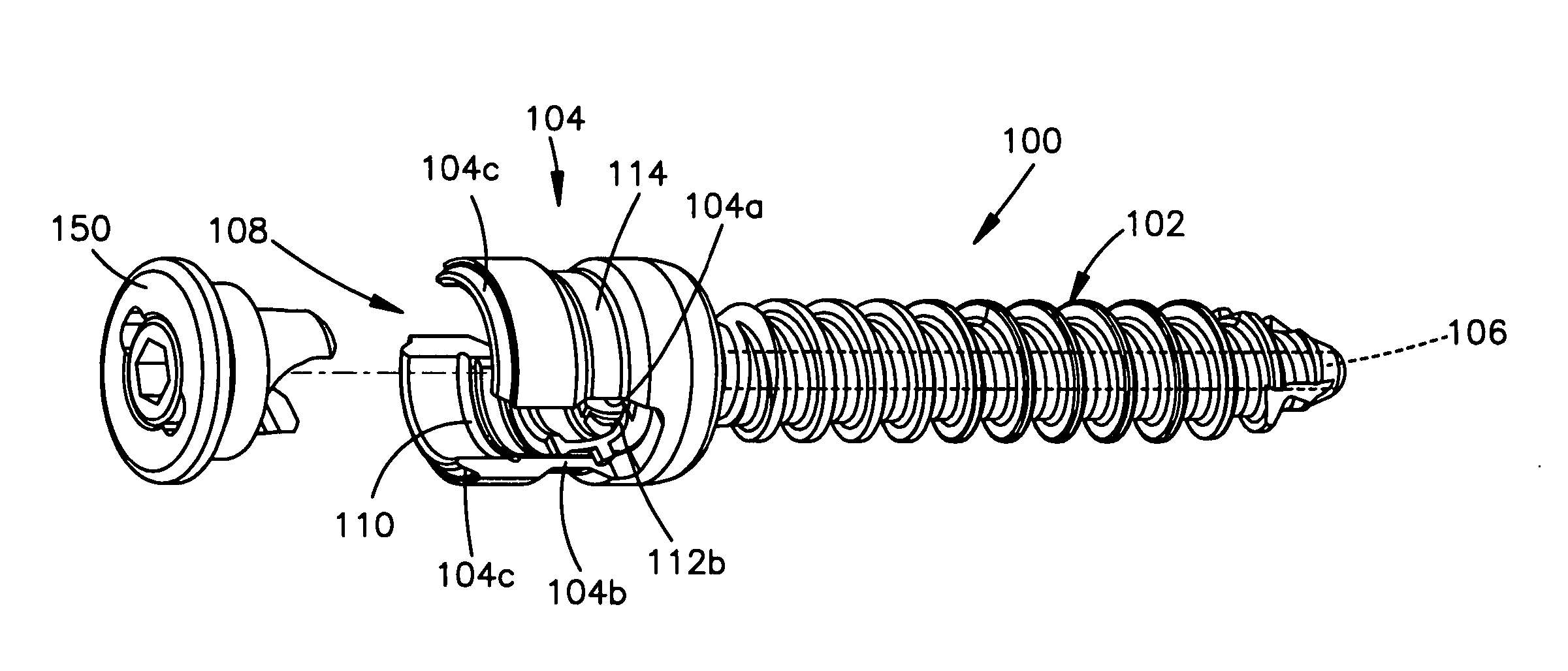Methods of spinal fixation and instrumentation
a technology of spinal fixation and instruments, applied in the field of surgical instruments, can solve the problems of prolonged recovery time and considerable post-operative pain
- Summary
- Abstract
- Description
- Claims
- Application Information
AI Technical Summary
Benefits of technology
Problems solved by technology
Method used
Image
Examples
Embodiment Construction
[0080] The method of spinal fixation of the present invention may be performed using various instrumentation, including a plurality of implants (e.g., screws 100), a plurality of insertion guides 200, 300, 350, a sleeve 400, 416, a rod (e.g., a fixation rod 500, 550, 570, 700) and a holding instrument 600, 650, 670, 800. It should, however, be understood that those of ordinary skill in the art will recognize many modifications and substitutions which may be made to various elements of the present invention. Moreover, although the instruments are described herein as being used in connection with spinal fixation procedures, one of ordinary skill in the art will readily appreciate that the instruments may be used in any other parts of the body (e.g., a long bone) to perform a fixation procedure. Thus, the location is not intended to be limiting in any way. In addition, the instruments may be used singularly or in combination with the other instruments described or other instruments tha...
PUM
 Login to View More
Login to View More Abstract
Description
Claims
Application Information
 Login to View More
Login to View More - R&D
- Intellectual Property
- Life Sciences
- Materials
- Tech Scout
- Unparalleled Data Quality
- Higher Quality Content
- 60% Fewer Hallucinations
Browse by: Latest US Patents, China's latest patents, Technical Efficacy Thesaurus, Application Domain, Technology Topic, Popular Technical Reports.
© 2025 PatSnap. All rights reserved.Legal|Privacy policy|Modern Slavery Act Transparency Statement|Sitemap|About US| Contact US: help@patsnap.com



